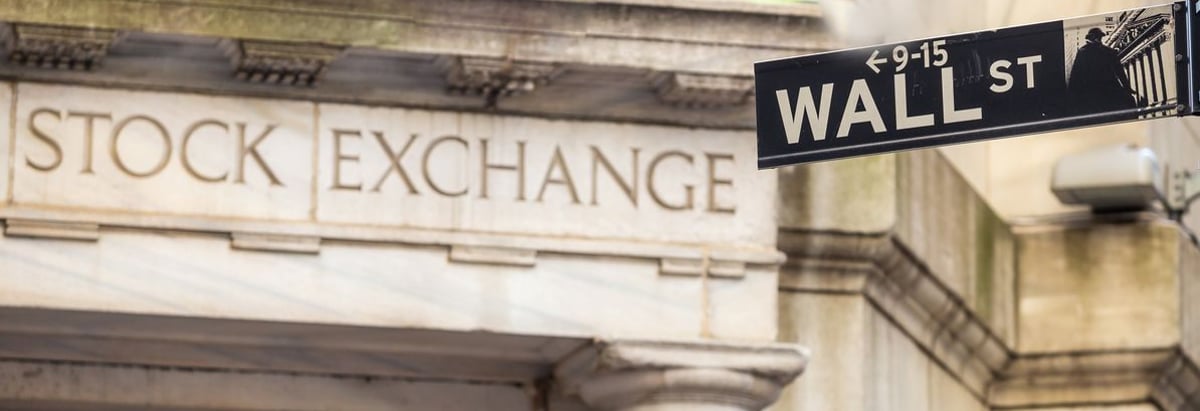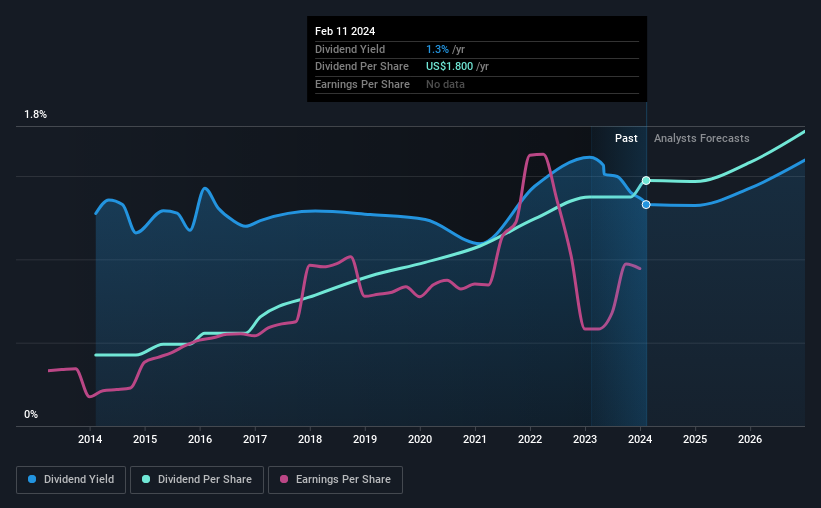- United States
- /
- Capital Markets
- /
- NYSE:ICE
Intercontinental Exchange's (NYSE:ICE) Dividend Will Be Increased To $0.45

Intercontinental Exchange, Inc. (NYSE:ICE) will increase its dividend from last year's comparable payment on the 29th of March to $0.45. Despite this raise, the dividend yield of 1.3% is only a modest boost to shareholder returns.
See our latest analysis for Intercontinental Exchange
Intercontinental Exchange's Payment Has Solid Earnings Coverage
Even a low dividend yield can be attractive if it is sustained for years on end. Prior to this announcement, Intercontinental Exchange's dividend was comfortably covered by both cash flow and earnings. This indicates that quite a large proportion of earnings is being invested back into the business.
The next year is set to see EPS grow by 41.0%. If the dividend continues along recent trends, we estimate the payout ratio will be 33%, which is in the range that makes us comfortable with the sustainability of the dividend.

Intercontinental Exchange Has A Solid Track Record
The company has been paying a dividend for a long time, and it has been quite stable which gives us confidence in the future dividend potential. Since 2014, the dividend has gone from $0.52 total annually to $1.80. This works out to be a compound annual growth rate (CAGR) of approximately 13% a year over that time. Rapidly growing dividends for a long time is a very valuable feature for an income stock.
Dividend Growth May Be Hard To Achieve
Investors could be attracted to the stock based on the quality of its payment history. Earnings per share has been crawling upwards at 3.6% per year. Growth of 3.6% may indicate that the company has limited investment opportunity so it is returning its earnings to shareholders instead. This isn't bad in itself, but unless earnings growth pick up we wouldn't expect dividends to grow either.
Intercontinental Exchange Looks Like A Great Dividend Stock
Overall, we think this could be an attractive income stock, and it is only getting better by paying a higher dividend this year. The company is easily earning enough to cover its dividend payments and it is great to see that these earnings are being translated into cash flow. All of these factors considered, we think this has solid potential as a dividend stock.
Market movements attest to how highly valued a consistent dividend policy is compared to one which is more unpredictable. Meanwhile, despite the importance of dividend payments, they are not the only factors our readers should know when assessing a company. Just as an example, we've come across 2 warning signs for Intercontinental Exchange you should be aware of, and 1 of them is significant. Is Intercontinental Exchange not quite the opportunity you were looking for? Why not check out our selection of top dividend stocks.
If you're looking to trade Intercontinental Exchange, open an account with the lowest-cost platform trusted by professionals, Interactive Brokers.
With clients in over 200 countries and territories, and access to 160 markets, IBKR lets you trade stocks, options, futures, forex, bonds and funds from a single integrated account.
Enjoy no hidden fees, no account minimums, and FX conversion rates as low as 0.03%, far better than what most brokers offer.
Sponsored ContentNew: AI Stock Screener & Alerts
Our new AI Stock Screener scans the market every day to uncover opportunities.
• Dividend Powerhouses (3%+ Yield)
• Undervalued Small Caps with Insider Buying
• High growth Tech and AI Companies
Or build your own from over 50 metrics.
Have feedback on this article? Concerned about the content? Get in touch with us directly. Alternatively, email editorial-team (at) simplywallst.com.
This article by Simply Wall St is general in nature. We provide commentary based on historical data and analyst forecasts only using an unbiased methodology and our articles are not intended to be financial advice. It does not constitute a recommendation to buy or sell any stock, and does not take account of your objectives, or your financial situation. We aim to bring you long-term focused analysis driven by fundamental data. Note that our analysis may not factor in the latest price-sensitive company announcements or qualitative material. Simply Wall St has no position in any stocks mentioned.
About NYSE:ICE
Intercontinental Exchange
Provides technology and data to financial institutions, corporations, and government entities in the United States, the United Kingdom, the European Union, India, Israel, Canada, and Singapore.
Proven track record average dividend payer.

